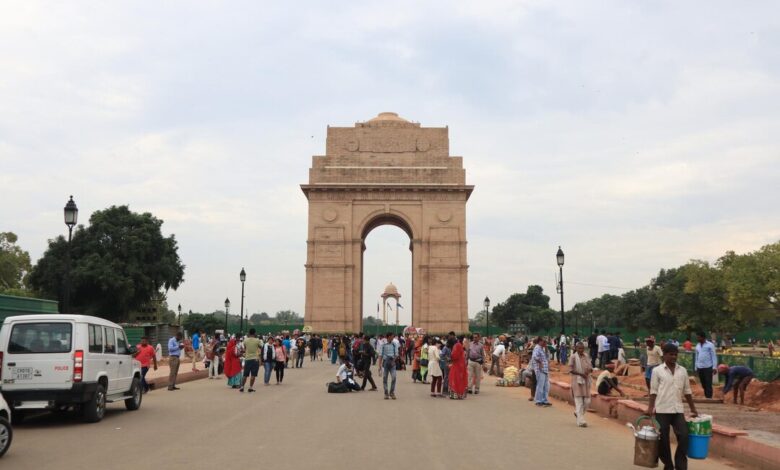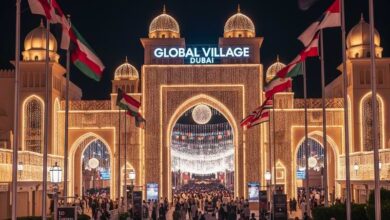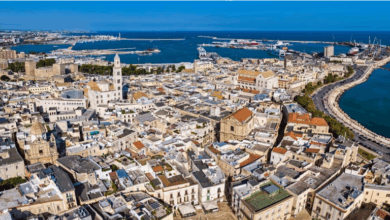Cultural Wonders of India: A Journey Through the Golden Triangle

Delhi: The Capital of Diversity
The journey begins in Delhi, the bustling capital city of India, which is a perfect blend of the old and the new. Delhi, often referred to as the “City of Cities,” has a history that spans several centuries. The city is home to Mughal architecture, colonial buildings, and modern infrastructure, making it a vibrant and dynamic place to start your Golden Triangle tour.
In Old Delhi, the streets are lined with ancient buildings, mosques, and markets that transport you back in time. The magnificent Red Fort, a UNESCO World Heritage Site, is a symbol of India’s imperial past. The Jama Masjid, one of the largest mosques in India, stands as a testament to Mughal architectural grandeur. The bustling Chandni Chowk market, with its narrow alleys and colorful shops, offers a glimpse into the everyday life of Delhiites.
New Delhi, on the other hand, showcases India’s colonial heritage. The India Gate, a war memorial dedicated to soldiers who died during World War I, and Rashtrapati Bhavan, the official residence of the President of India, highlight the British influence on the city’s architecture. The Qutub Minar, a towering minaret, and the serene Lotus Temple also add to Delhi’s charm, offering visitors a perfect blend of spirituality, history, and culture.
Agra: The City of Love
Next on the Golden Triangle tour is Agra, famous for the magnificent Taj Mahal. This symbol of eternal love attracts millions of visitors from around the world every year. The Taj Mahal, built by Emperor Shah Jahan in memory of his beloved wife Mumtaz Mahal, is a stunning example of Mughal architecture. The marble structure, adorned with intricate carvings and surrounded by lush gardens, is a masterpiece that embodies the grandeur and beauty of India’s rich history.
While the Taj Mahal is undoubtedly the main attraction in Agra, the city also boasts other architectural wonders. The Agra Fort, a UNESCO World Heritage Site, is another marvel of Mughal architecture. Built by Emperor Akbar, this massive fort offers a glimpse into the royal life of the Mughal rulers. The fort’s red sandstone walls, sprawling courtyards, and grand palaces are a testament to the opulence and splendor of the Mughal empire.
Nearby, the Fatehpur Sikri, a former Mughal capital, is another must-visit destination on the Golden Triangle tour. This abandoned city, built by Emperor Akbar, is an architectural gem that blends Persian, Indian, and Islamic styles. The Buland Darwaza, the largest gateway in the world, and the Jama Masjid are some of the impressive structures within this UNESCO World Heritage Site.
Jaipur: The Pink City
The final stop on the Golden Triangle tour is Jaipur, the capital city of Rajasthan, famously known as the “Pink City” due to the distinct pink color of its buildings. Jaipur offers a fascinating mix of history, culture, and royal grandeur. The city is known for its majestic palaces, forts, and temples, all of which showcase the region’s rich heritage.
One of the most iconic landmarks in Jaipur is the Hawa Mahal, or “Palace of Winds.” This stunning structure, with its 953 small windows or jharokhas, was designed to allow royal women to observe street life without being seen. The Amer Fort, located on a hilltop, is another architectural marvel that attracts visitors with its impressive ramparts, intricate carvings, and beautiful courtyards. The City Palace, a blend of Mughal and Rajput architecture, is still the residence of the royal family and offers a glimpse into the lavish lifestyle of the Rajput rulers.
Jaipur is also known for its vibrant bazaars, where visitors can shop for traditional Rajasthani handicrafts, textiles, jewelry, and spices. The Jantar Mantar, an astronomical observatory, and the Albert Hall Museum further enrich Jaipur’s cultural heritage.
The Golden Triangle Tour: A Deep Dive into Indian Culture
The Golden Triangle tour offers more than just a glimpse into India’s past. It is a journey through the country’s rich cultural heritage, offering a firsthand experience of the country’s art, architecture, and history. The cities of Delhi, Agra, and Jaipur provide visitors with a chance to witness the evolution of Indian architecture, from the Mughal era to the Rajput period, and explore the diverse traditions, cuisines, and customs of India.
conclusion
Each city on the Golden Triangle route has a unique charm, and together, they form a cohesive narrative of India’s cultural and historical journey. Whether it’s the bustling streets of Delhi, the eternal beauty of the Taj Mahal in Agra, or the regal palaces of Jaipur, the Golden Triangle tour offers an unforgettable experience that will leave you in awe of India’s cultural wonders.
For travelers seeking to explore the essence of India, the Golden Triangle tour is a must-do journey that immerses you in the heart of India’s rich cultural tapestry.



